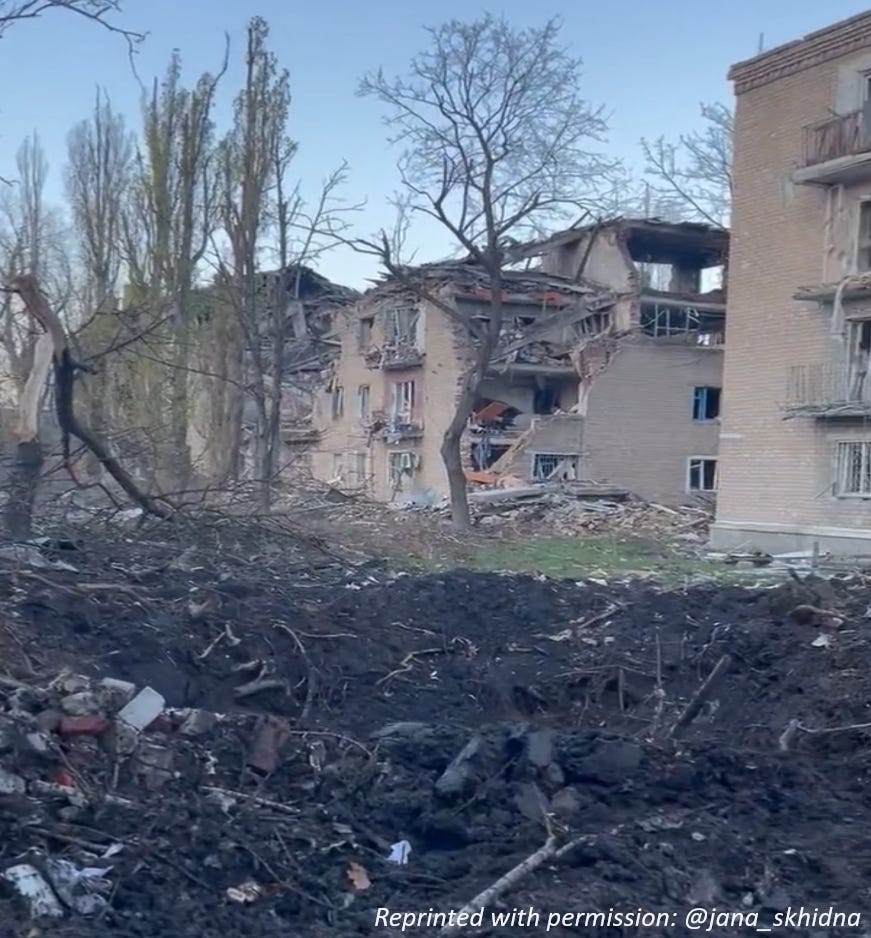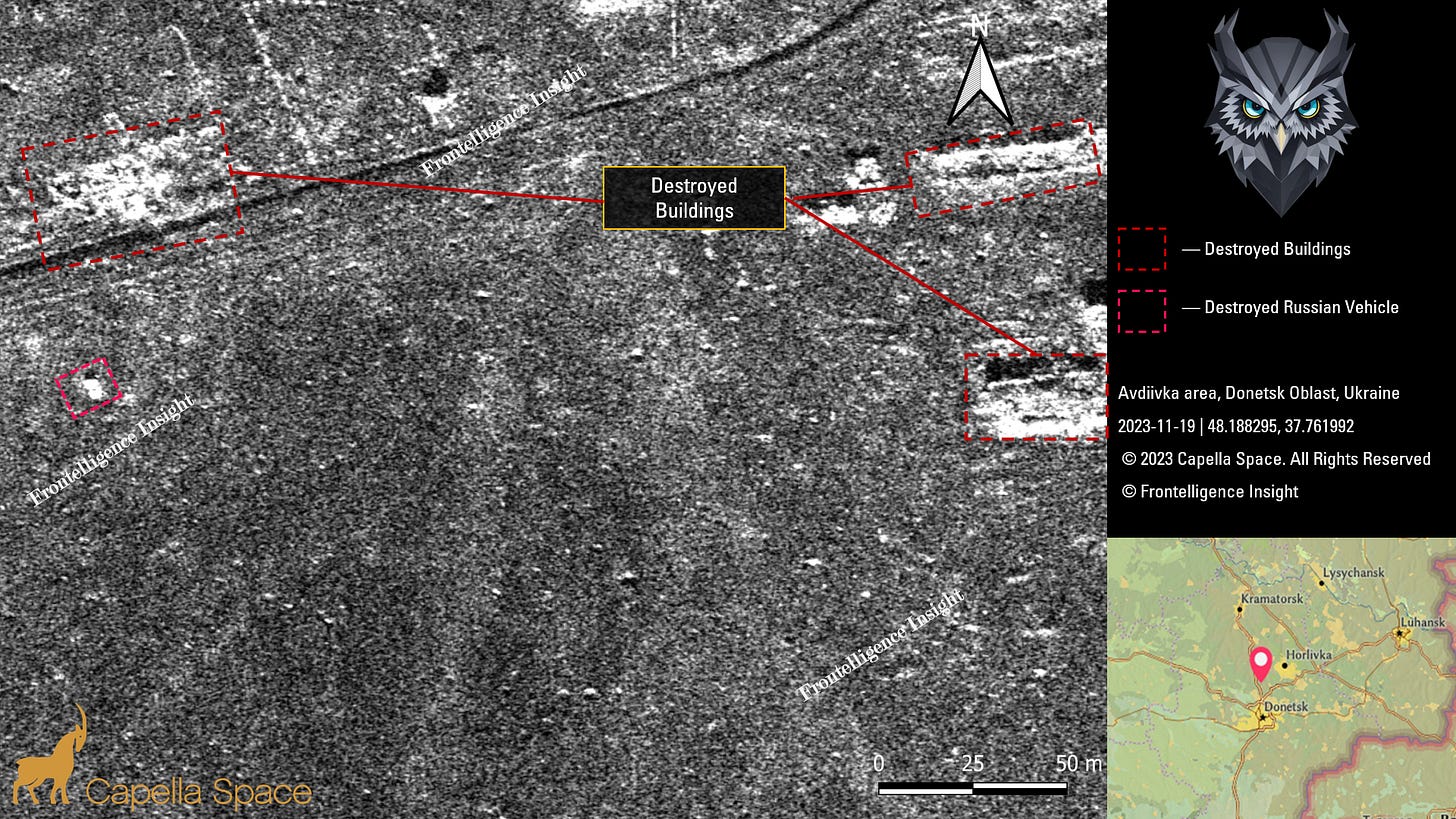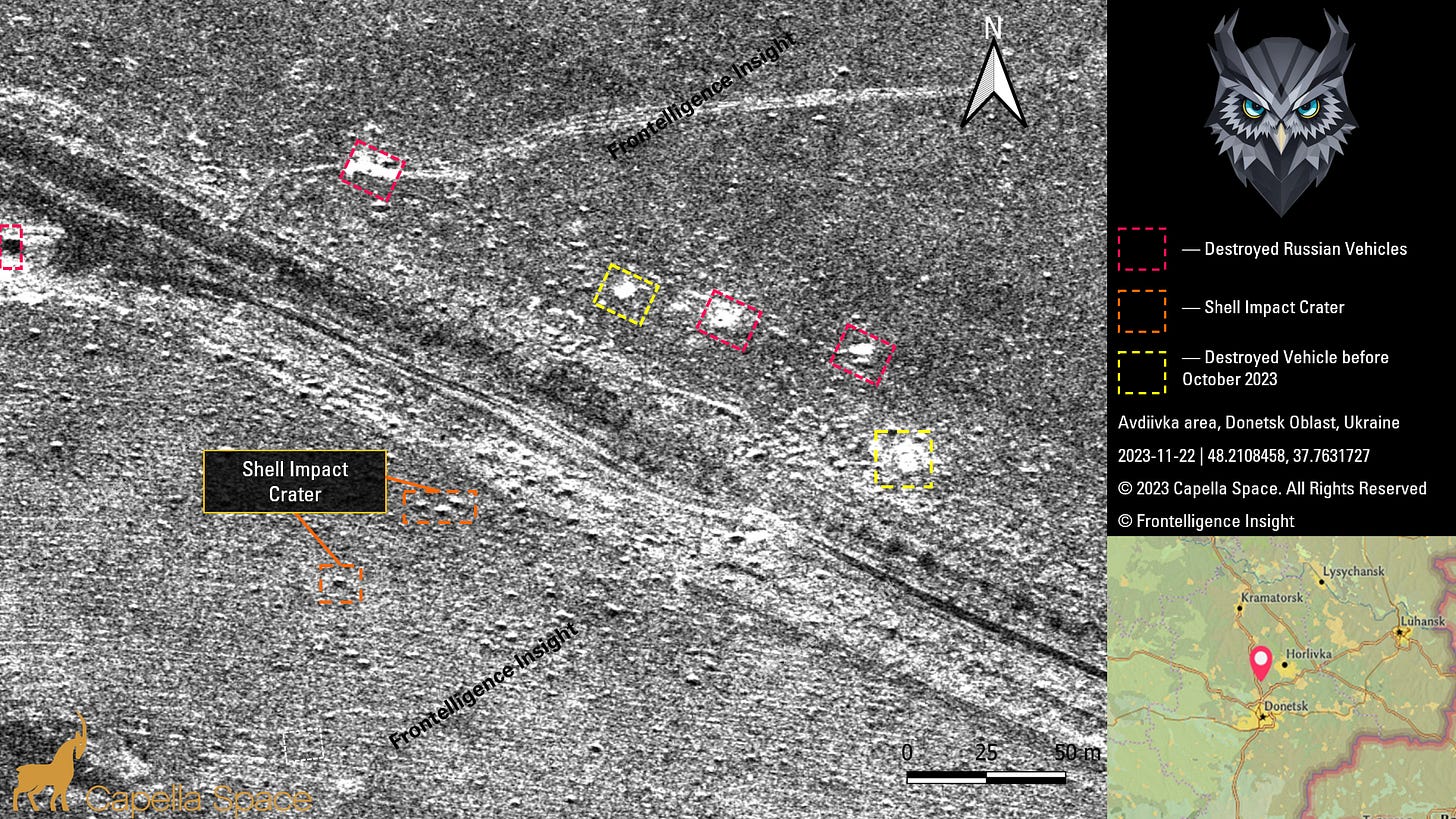Avdiivka Report: Understanding the Frontline Dynamycs through Synthetic Aperture Radar
24.11 Update
Despite dense cloud cover blocking satellite, drone, and optical surveillance of the Avdiivka battlefield, our team continued the analysis using Synthetic Aperture Radar (SAR) systems. In this analysis, we'll offer insights into the current situation in Avdiivka and share our perspective on future developments.
Before we delve further, let's clarify what SAR is for a broader audience: Synthetic Aperture Radar (SAR) is a technology that employs radar to generate images of the Earth's surface. By capturing and processing reflected waves, SAR provides detailed imagery regardless of weather conditions or daylight.
We combined SAR data with on-the-ground testimonials and open-source video materials to gain comprehensive insights.
Key Observations
Vehicle Reduction: In contrast to the initial month of assaults, russian forces are employing fewer vehicles in smaller numbers.
Tactical Shift: There's a notable increase in the use of small tactical groups, consistently moving in the same areas despite prior losses.
Guided Aerial bombs: There is a consistent uptick in the use of guided aerial bombs by Russian forces.
As we correctly anticipated, worsened weather conditions have hindered russian efforts to supply their overextended logistics routes efficiently. Consequently, this limitation made it difficult to develop initial successes, particularly in the northern sector of Avdiivka, notably around Berdychi.
Following an initial success north of Avdiivka, russian forces extended their assaults for over a month. However, little progress was made in the northern part, and despite some tactical successes russian forces failed to set persistent footholds in the AKHZ plant. Recently, russians were able to seize control over parts of the industrial zone south of Avdiivka. These gains were primarily attributed to continuous infantry assaults, posing potential challenges for Ukrainian defenders in the coming weeks
Russian forces persist in deploying small tactical groups, despite a high mortality rate. This sustained tactic, where one group follows another, has the potential to exhaust Ukrainian troops and compromise their positions over time. If any position is lost, russians always try to counter-attack.
The deployment of cluster bombs, as well as 250-1500kg bombs equipped with the UMPK kit poses a significant problem. Despite them being inaccurate, they are still dangerous due to the high explosive charge, particularly problematic in urban areas, leading to severe destruction regardless of precision.
Predicting future developments is challenging, hinging on russia's ability to persist with deploying infantry without adequate cover. This attritional approach, aimed at wearing down defenders, brings uncertainties regarding its duration. Reflecting on past experiences, like near Vuhledar, where a shift from large mechanized attacks to small tactical groups yielded no success after months, suggests this approach might fail.
However, let’s not forget that drawing direct parallels with Vuhledar or Bakhmut may not be entirely accurate. The operational environments were distinct, making them unreliable indicators of what might happen next. In simpler terms, facing substantial losses and challenging weather, russians ramped up offensives using readily available resources—infantry, artillery, and aerial bombs. They shifted their focus to AKHZ, Berychi, and the southern industrial zone, reducing emphasis on the initial plan to encircle Avdiivka with mechanized forces—a development we anticipated.













Thank you. I value your reporting.
Another great assessment